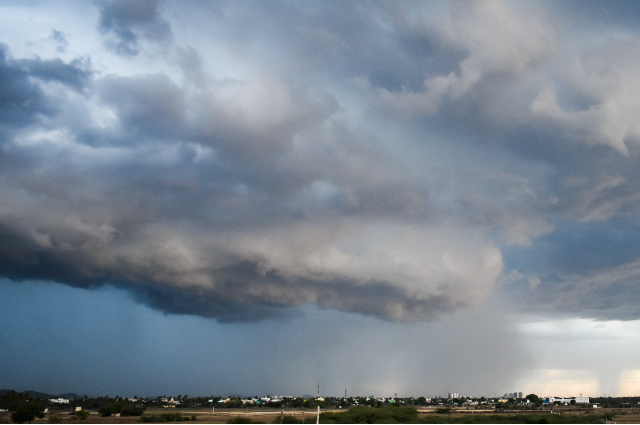
Photo by Ganesh Partheeban on Unsplash/Representative Image
Cyclone Biparjoy, developed in the Arabian Sea which was earlier to travel towards the Pakistan coastline is heading towards the northern Gujarat Cost hitting the state most expectedly on 15th June.
According to India's Regional Specialised Meteorological Centre (RSMC), the cyclone might cause storm surges of 2-3 meters in height, destruction of non-pacca houses, damage to crops and plantations along with disruption of railways and powerlines in and areas around the coast of Gujarat.
It is expected to generate wind speeds of 125-135 km/hr. It is a tropical cyclone.
The National Disaster Management Authority classifies cyclones broadly into two categories- extratropical cyclones and tropical cyclones.
What is a Cyclone?
It is a large-scale system of air that rotates around the center of a low-pressure area. It is usually accompanied by bad weather and strong gusts of wind. As per NDMA, a cyclone is characterized by inward spiraling winds that rotate anticlockwise in the Northern Hemisphere and clockwise in the Southern Hemisphere.
- Extratropical Cyclones: Known as Mid-latitude cyclones occur outside the regions of the tropics. They have 'cold air at their core and derive their energy from the release of potential energy when cold and warm air masses interact. Such cyclones have more than one or more fronts - a weather system that is the boundary between two different types of air masses. Once is represented by warm air and the other by cold air - connected to them and can occur over land or ocean.
What are Tropical Cyclones?
These develop in the regions between the Capricorn and Cancer. They are the most devastating storms. Such cyclones develop 'thunderstorm activity starts building close to the center of circulation, and the strongest winds and rain are no longer in a band far from the Centre.'
The core of the storm turns warm and the cyclone gets most of the energy from the latent heat released when water vapor that has evaporated from warm ocean waters which further condenses into liquid water.
They have different names depending on their location and strength. For example, 'hurricanes' in the Caribbean, Mexico, North Atlantic, and 'typhoons' in the Pacific regions.
. . .
Reference:
- indianexpress.com
